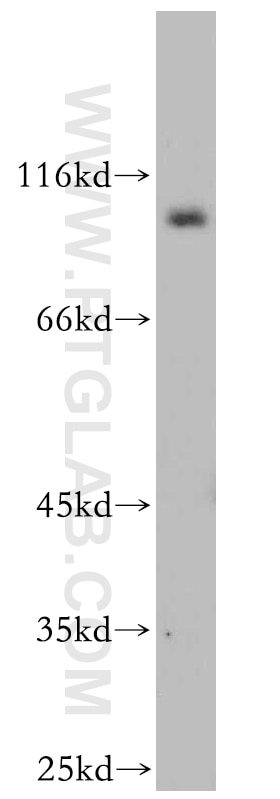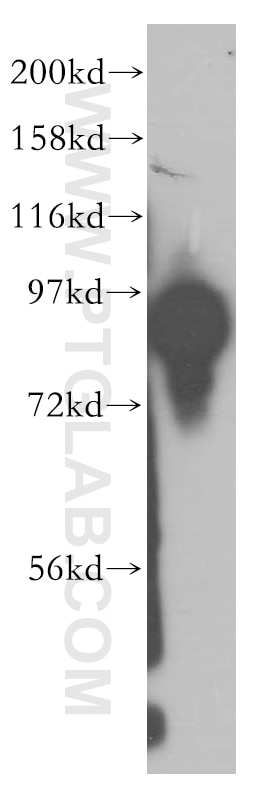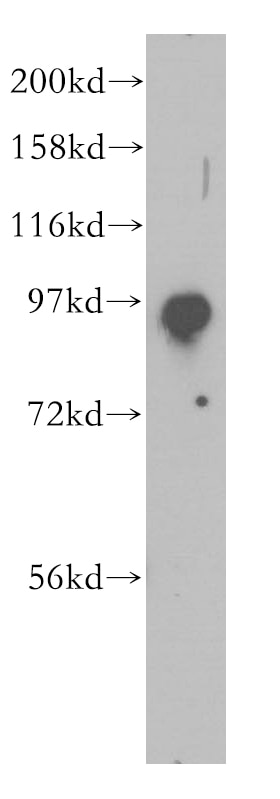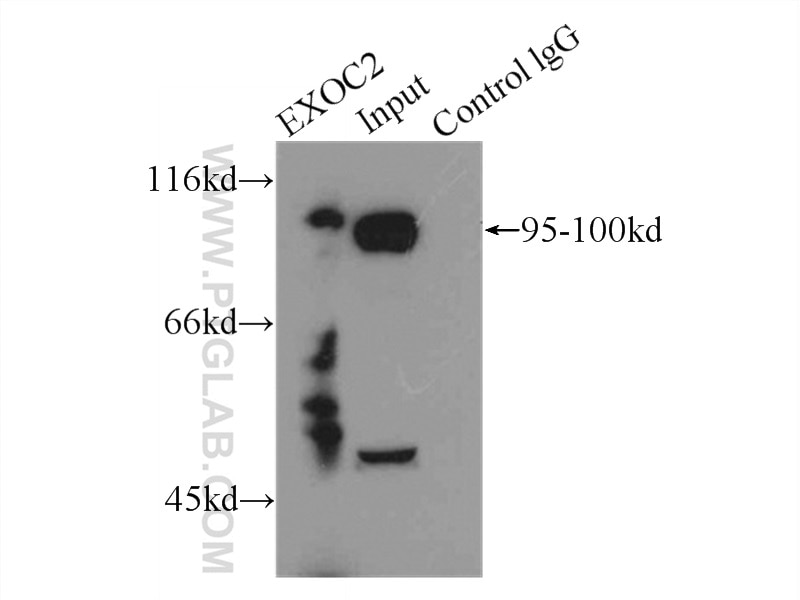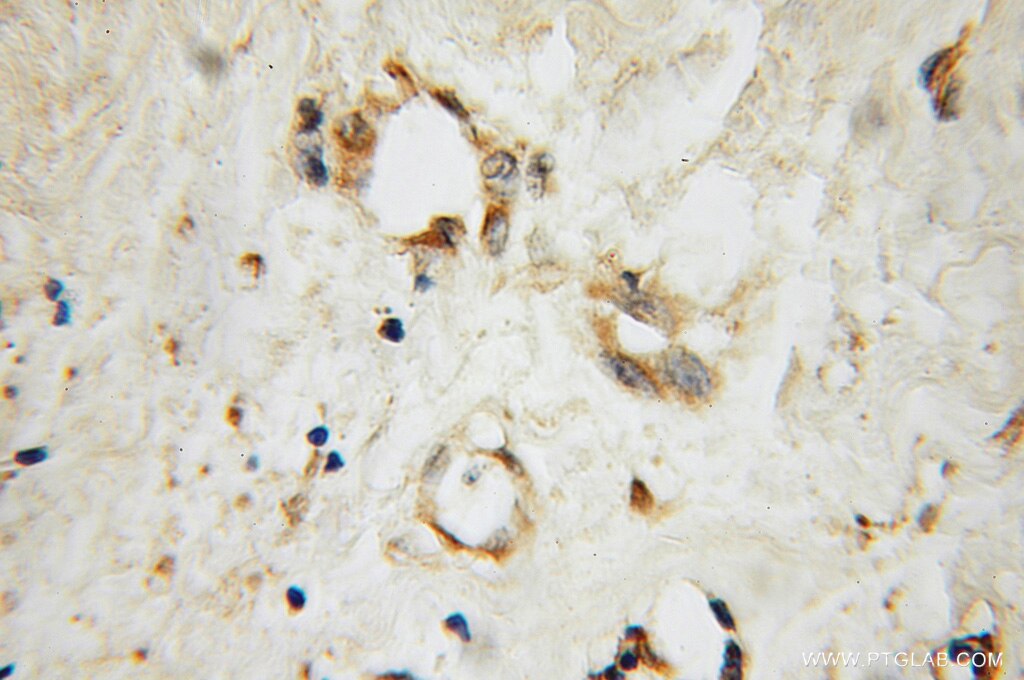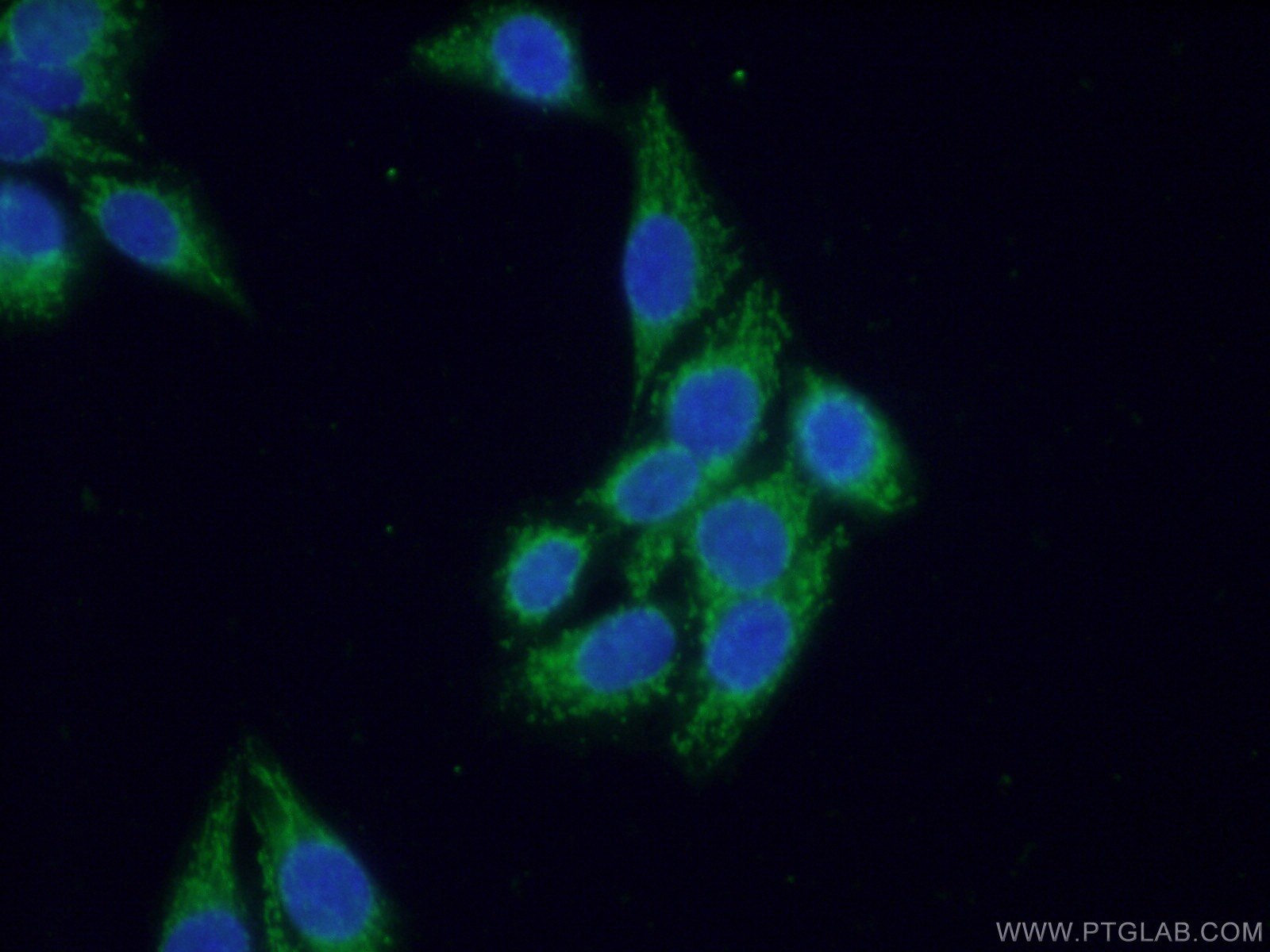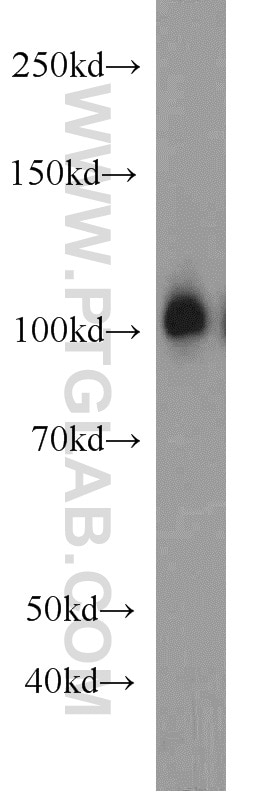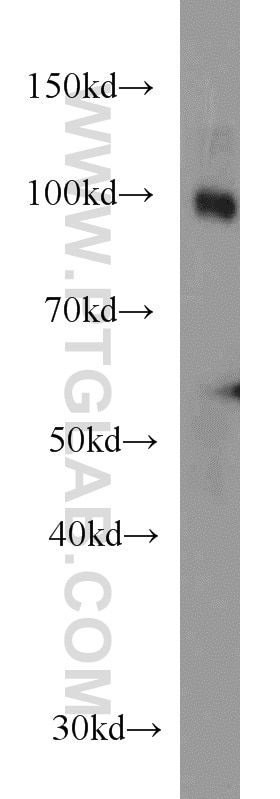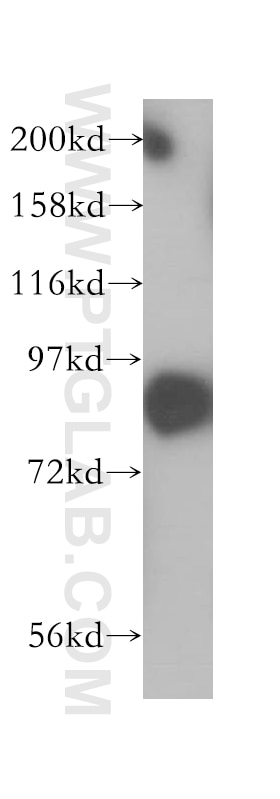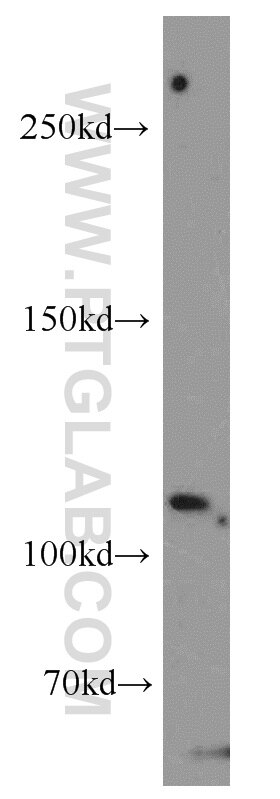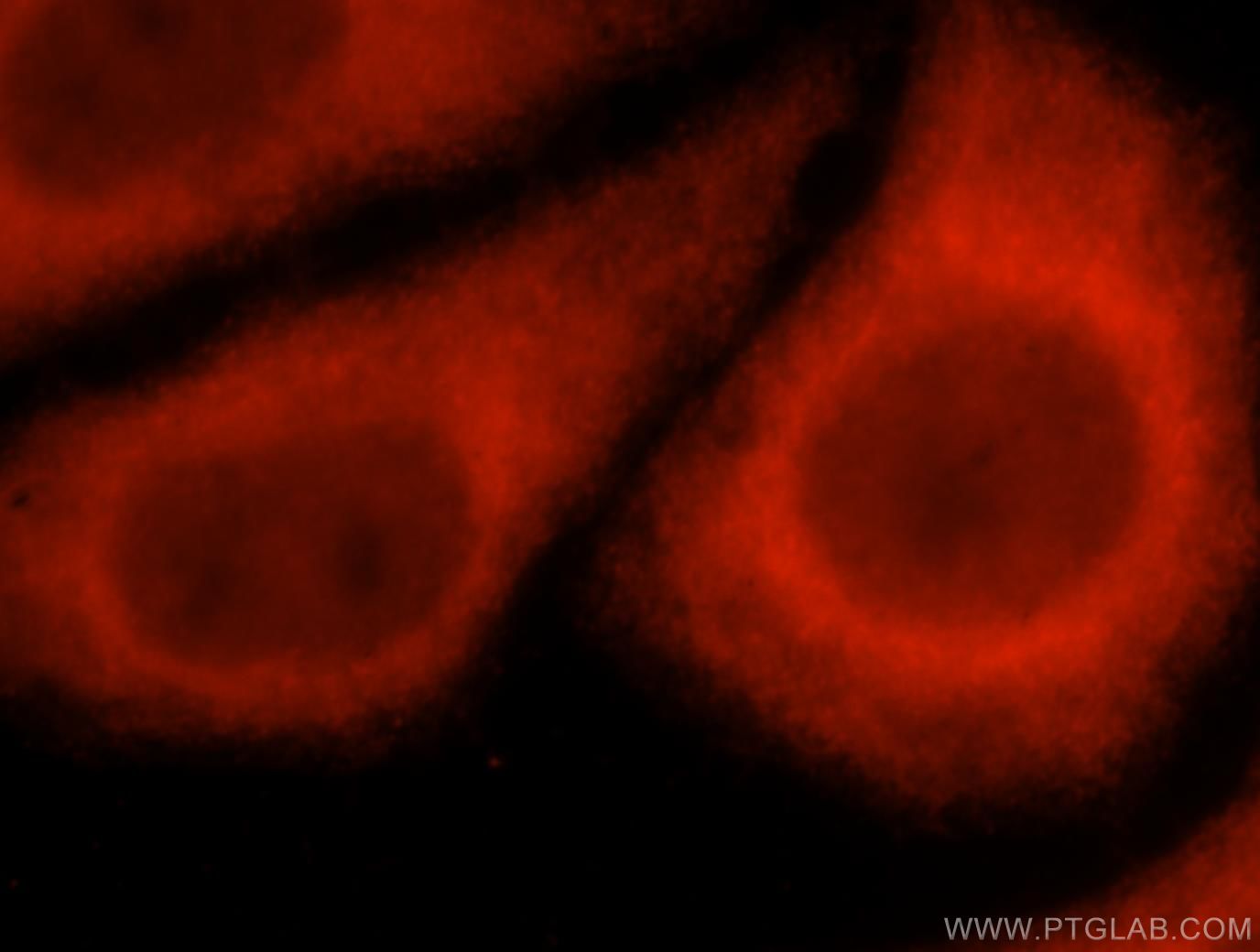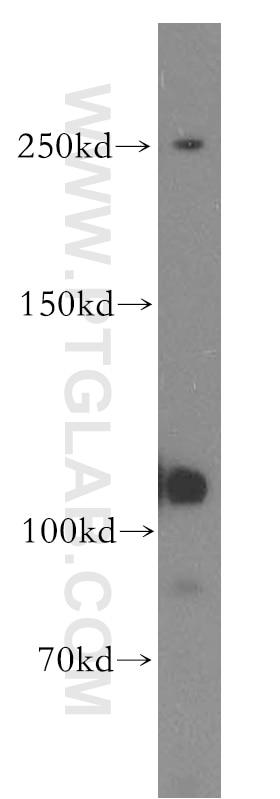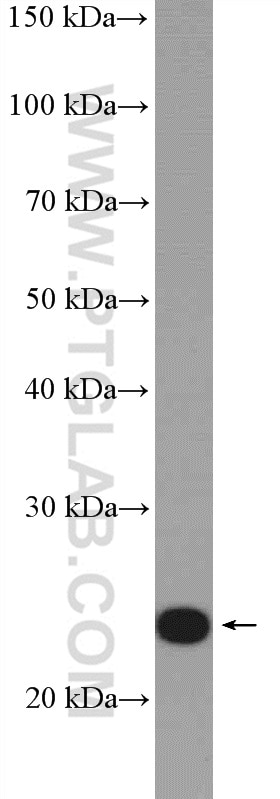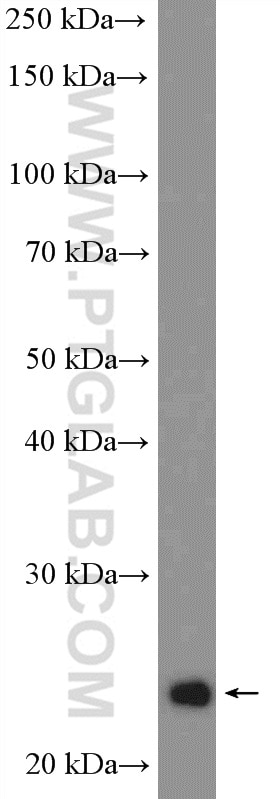- Phare
- Validé par KD/KO
Anticorps Polyclonal de lapin anti-SEC5/EXOC2
SEC5/EXOC2 Polyclonal Antibody for WB, IP, IF, IHC, ELISA
Hôte / Isotype
Lapin / IgG
Réactivité testée
Humain, rat, souris
Applications
WB, IHC, IF/ICC, IP, CoIP, ELISA
Conjugaison
Non conjugué
N° de cat : 12751-1-AP
Synonymes
Galerie de données de validation
Applications testées
| Résultats positifs en WB | tissu cérébral de souris, tissu cérébral humain, tissu d'iléon humain |
| Résultats positifs en IP | tissu cérébral de souris |
| Résultats positifs en IHC | tissu de cancer du sein humain il est suggéré de démasquer l'antigène avec un tampon de TE buffer pH 9.0; (*) À défaut, 'le démasquage de l'antigène peut être 'effectué avec un tampon citrate pH 6,0. |
| Résultats positifs en IF/ICC | cellules HeLa, |
Dilution recommandée
| Application | Dilution |
|---|---|
| Western Blot (WB) | WB : 1:500-1:1000 |
| Immunoprécipitation (IP) | IP : 0.5-4.0 ug for 1.0-3.0 mg of total protein lysate |
| Immunohistochimie (IHC) | IHC : 1:20-1:200 |
| Immunofluorescence (IF)/ICC | IF/ICC : 1:50-1:500 |
| It is recommended that this reagent should be titrated in each testing system to obtain optimal results. | |
| Sample-dependent, check data in validation data gallery | |
Applications publiées
| KD/KO | See 8 publications below |
| WB | See 17 publications below |
| IHC | See 1 publications below |
| IF | See 7 publications below |
| IP | See 1 publications below |
| CoIP | See 1 publications below |
Informations sur le produit
12751-1-AP cible SEC5/EXOC2 dans les applications de WB, IHC, IF/ICC, IP, CoIP, ELISA et montre une réactivité avec des échantillons Humain, rat, souris
| Réactivité | Humain, rat, souris |
| Réactivité citée | rat, Humain, souris |
| Hôte / Isotype | Lapin / IgG |
| Clonalité | Polyclonal |
| Type | Anticorps |
| Immunogène | SEC5/EXOC2 Protéine recombinante Ag3147 |
| Nom complet | exocyst complex component 2 |
| Masse moléculaire calculée | 924 aa, 104 kDa |
| Poids moléculaire observé | 95-100 kDa |
| Numéro d’acquisition GenBank | BC016918 |
| Symbole du gène | SEC5 |
| Identification du gène (NCBI) | 55770 |
| Conjugaison | Non conjugué |
| Forme | Liquide |
| Méthode de purification | Purification par affinité contre l'antigène |
| Tampon de stockage | PBS avec azoture de sodium à 0,02 % et glycérol à 50 % pH 7,3 |
| Conditions de stockage | Stocker à -20°C. Stable pendant un an après l'expédition. L'aliquotage n'est pas nécessaire pour le stockage à -20oC Les 20ul contiennent 0,1% de BSA. |
Informations générales
EXOC2 (exocyst complex component 2), also known as SEC5 and SEC5L1, is a component of the exocyst complex, and is required to mediate RalB-dependent survival signals in transformed cells. The exocyst complex, composed of eight evolutionarily conserved subunits (SEC3, SEC5, SEC6, SEC8, SEC10, SEC15, EXO70, and EXO84), is involved in tethering post-Golgi secretory vesicles to specific plasma membrane domains. The gene of EXOC2 maps to chromosome 6p25.3, and encodes a 924-amino acid protein with an experimentally determined molecular mass of 95-100 kDa. EXOC2 mRNA is widely expressed with highest levels in brain and placenta.
Protocole
| Product Specific Protocols | |
|---|---|
| WB protocol for SEC5/EXOC2 antibody 12751-1-AP | Download protocol |
| IHC protocol for SEC5/EXOC2 antibody 12751-1-AP | Download protocol |
| IF protocol for SEC5/EXOC2 antibody 12751-1-AP | Download protocol |
| IP protocol for SEC5/EXOC2 antibody 12751-1-AP | Download protocol |
| Standard Protocols | |
|---|---|
| Click here to view our Standard Protocols |
Publications
| Species | Application | Title |
|---|---|---|
Nat Cell Biol M-Sec promotes membrane nanotube formation by interacting with Ral and the exocyst complex.
| ||
Nat Cell Biol The deubiquitylase USP33 discriminates between RALB functions in autophagy and innate immune response.
| ||
Blood vWF maturation and release are controlled by two regulators of Weibel-Palade body biogenesis: exocyst and BLOC-2. | ||
Sci Signal Phosphorylation of the exocyst protein Exo84 by TBK1 promotes insulin-stimulated GLUT4 trafficking. |
